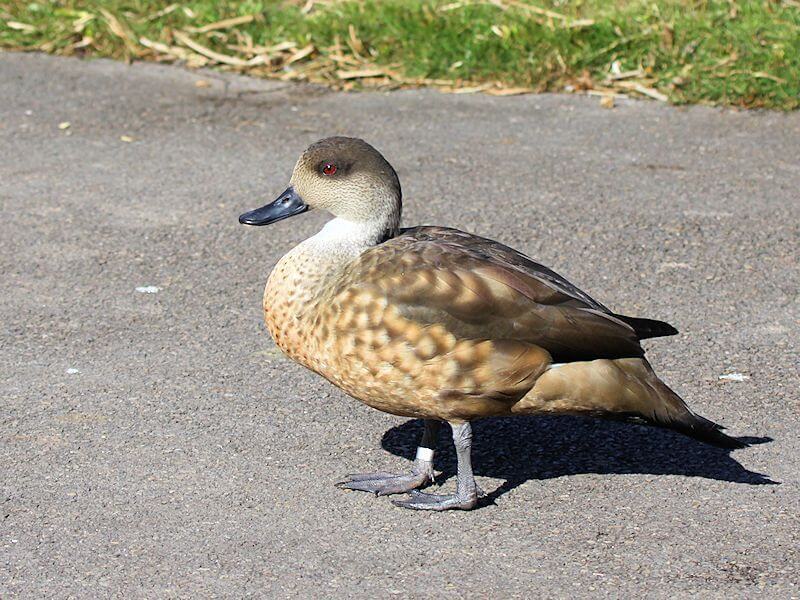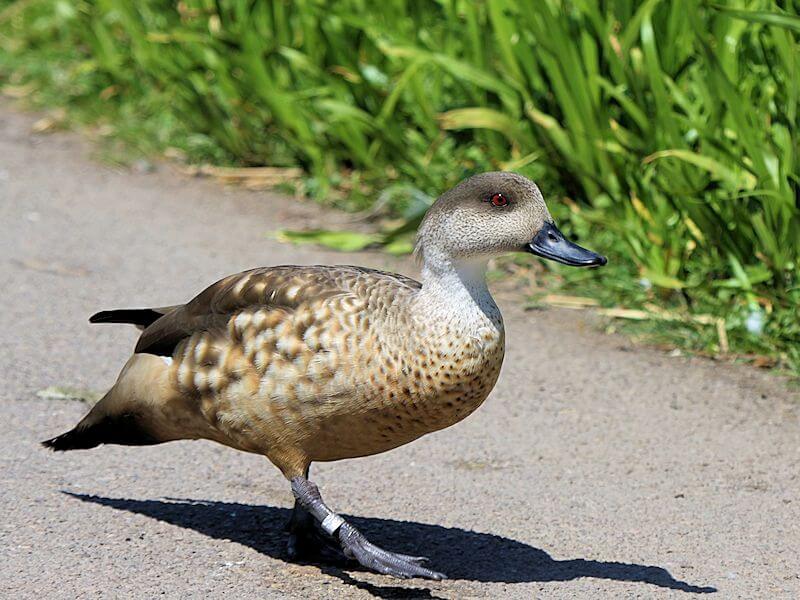Patagonian Crested Duck


Scientific name
Lophonetta specularioides specularioides
Alternative names
Also known as the Southern Crested Duck or the Grey Duck (in the Falkland Islands). It is the nominate subspecies of the Crested Duck, alongside the Andean Crested Duck.
Measurements
| Feature | Range / Note |
|---|---|
| Length | 50–60 cm |
| Weight | Around 1 kg; males slightly heavier |
| Wingspan | ~85–95 cm (estimated average) |
Status
Not considered endangered. Global population size unknown, though around 10,000 breeding pairs are estimated in the Falkland Islands.
Identification
A medium-sized duck with a grey chin, neck, and face, and mottled brown and grey plumage across the body. The crown and area around the eyes are dark brown to blackish, and the tail feathers are often black. It has a black bill and dark grey to black legs and webbed feet.
Males and females look alike, though males are slightly larger. Young birds have smaller or no crests, browner faces, whiter abdomens, and pinkish bills. The speculum shows light purple tones with green or bronze reflections.
Behavior
Generally calm and non-migratory, the species stays in the same region year-round, finding sheltered spots in colder months. It may be seen alone or in pairs, occasionally forming small groups.
Distribution
Found in southern South America — including Chile, Argentina, and the Falkland Islands. Lives in both coastal and freshwater habitats.
Habitat
Inhabits marshes, swamps, lakes, ponds, and sheltered coastal bays. Prefers areas with vegetation for nesting and cover.
Feeding
Feeds mainly on aquatic invertebrates such as insects, larvae, crustaceans, and molluscs. It also consumes small amounts of aquatic plants and filamentous algae. Feeds by diving or dabbling, and diet varies between fresh and salt water environments.
Breeding
Breeding season varies by region: January–March in the Andes, and October–December farther south. Nests are built on the ground in tall grass or shrubs near water, made of vegetation and lined with down feathers.
- Clutch size: 5–8 cream-colored eggs
- Egg size: 63 × 43 mm, ~56 g each
- Incubation: ~30 days, by the female
- Fledging: 10–11 weeks
Double broods are fairly common. Both parents care for the ducklings after hatching.
Wintering
Patagonian Crested Ducks are non-migratory but may move locally in winter to sheltered bays, small lakes, or coastal areas where water remains ice-free and food is accessible. High-latitude or high-altitude populations disperse along the coast during colder months.
Conservation
Stable overall, with strong populations in the Falkland Islands. Conservation attention is minimal compared to its rarer relative, the Andean Crested Duck.
